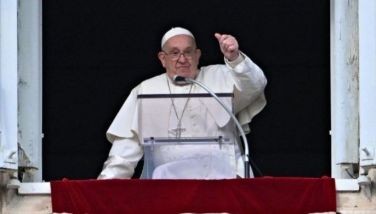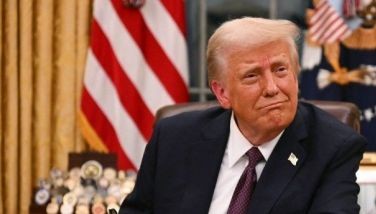Baltic states lead push to cut Russia gas reliance
VILNIUS, Lithuania — Later this year, a ship the size of an aircraft carrier will arrive at Lithuania's port of Klaipeda on the Baltic Sea. The 300-meter (984-foot) vessel is not a warship, but a floating natural gas import terminal — aptly named "Independence" — that will be key to the Baltic region's plan to reduce its reliance on Russia's energy supplies.
The countries in this northeastern corner of the European Union are among the most dependent on Russia to keep their homes warm and industries running. The three Baltic nations of Latvia, Estonia and Lithuania get all their gas from Russia and lack connections to the wider European pipeline system that would allow them to import from elsewhere. Poland meets 70 percent of its energy needs with Russian supplies.
As a result, the states, which still have fresh memories of domination by Moscow during the Cold War, have been among the swiftest countries in Europe to act to reduce that dependence.
Moscow's use of gas supplies as a means of putting pressure on Ukraine — like the Baltics, once part of the Soviet Union — has driven new urgency into projects to diversify energy supplies in the region, even as the full 28-member EU has struggled to come up with a united approach.
Historical factors help make Poland and the Baltic states particularly skeptical about Moscow's intentions. Latvia, Estonia and Lithuania were forcibly incorporated into the Soviet Union during World War II, and thousands were deported to labor camps. During the Cold War, Poland was ruled by communists installed and backed by Moscow.
The choice of a floating gas terminal is a sign of the urgency felt in the region. It was two years faster to build than on land, and at $330 million, was some 50 percent cheaper. It will be able to handle 4 billion cubic meters (141 billion cubic feet) of gas a year — well above Lithuania's annual needs for 3 billion cubic meters — when it becomes operational in January. The ship, owned by Norway's Hoegh LNG and leased to Lithuania's SC Klaipedos Nafta terminal operator, has already undergone sea trials after being built at a shipyard in Korea.
Meanwhile, neighboring Poland is working on a new liquid natural gas terminal on its Baltic Coast that is slated to come on line early next year. The terminal at Swinoujscie will enable Poland to buy some of its gas from Qatar.
And Estonia and Finland are talking about building two new gas terminals at their end of the Baltic, as well as an undersea pipeline that would connect the two countries.
Other EU countries have been slower about establishing new projects. Germany has stalled on a proposal to set up a liquid natural gas terminal at Wilhelmshaven, on the North Sea.
Although the Baltics are leading Europe in the effort to diversify their energy sources, the solutions are not easy. Seaborne liquid gas — called liquid natural gas, or LNG — can be expensive, costing as much as 50 percent more in energy-hungry Asian markets. That's because it needs to be cooled to minus 165 degrees Celsius (minus 265 Fahrenheit) to make it liquid and shrink it to one-six hundredth of the original volume. Insulated tankers can then take it overseas.
As a result of such costs, analysts say, the Baltic states and Poland will likely not become completely independent of Russian imports. Rather, the new import capacity will serve as partial insurance against any cut-off threats. More to the point, it will also give the countries leverage in negotiating prices with Gazprom, Russia's state gas monopoly. Russia raised the price of gas for Ukraine to $485 per thousand cubic meters from $268.50, and President Vladimir Putin has said Russia may start demanding payment in advance — heavy burdens for a country whose finances are near collapse.
Building the new gas terminals "now means you have alternatives," said Aleksandra Gawlikowska-Fyk, head of the energy project at the Polish Institute of International Affairs. "Diversity always increases security of supply."
Other ways to diversify energy supplies are in the works, often supported by EU funds.
These solutions include changing pipelines so they can run west-east and not only east-west. German energy company RWE began such "reverse-flow" supplies on April 1 and says it will sell Ukraine 1 billion cubic meters a year — a symbolic amount, but a start.
The three Baltic countries are working on a new nuclear power plant in Lithuania to replace power lost after the EU forced Lithuania to shut down its Soviet-designed reactor over safety concerns. That project has been slowed by lack of cooperation from Latvia and Estonia, which missed out on hosting the reactor and the jobs that go with it.
Analyst Gawlikowksa-Fyk says the Ukraine crisis and concern from the EU's executive commission, may raise the pressure to change that.
"The external situation, as well as the commission, may incentivize those countries to cooperate," she said.
- Latest
- Trending




























